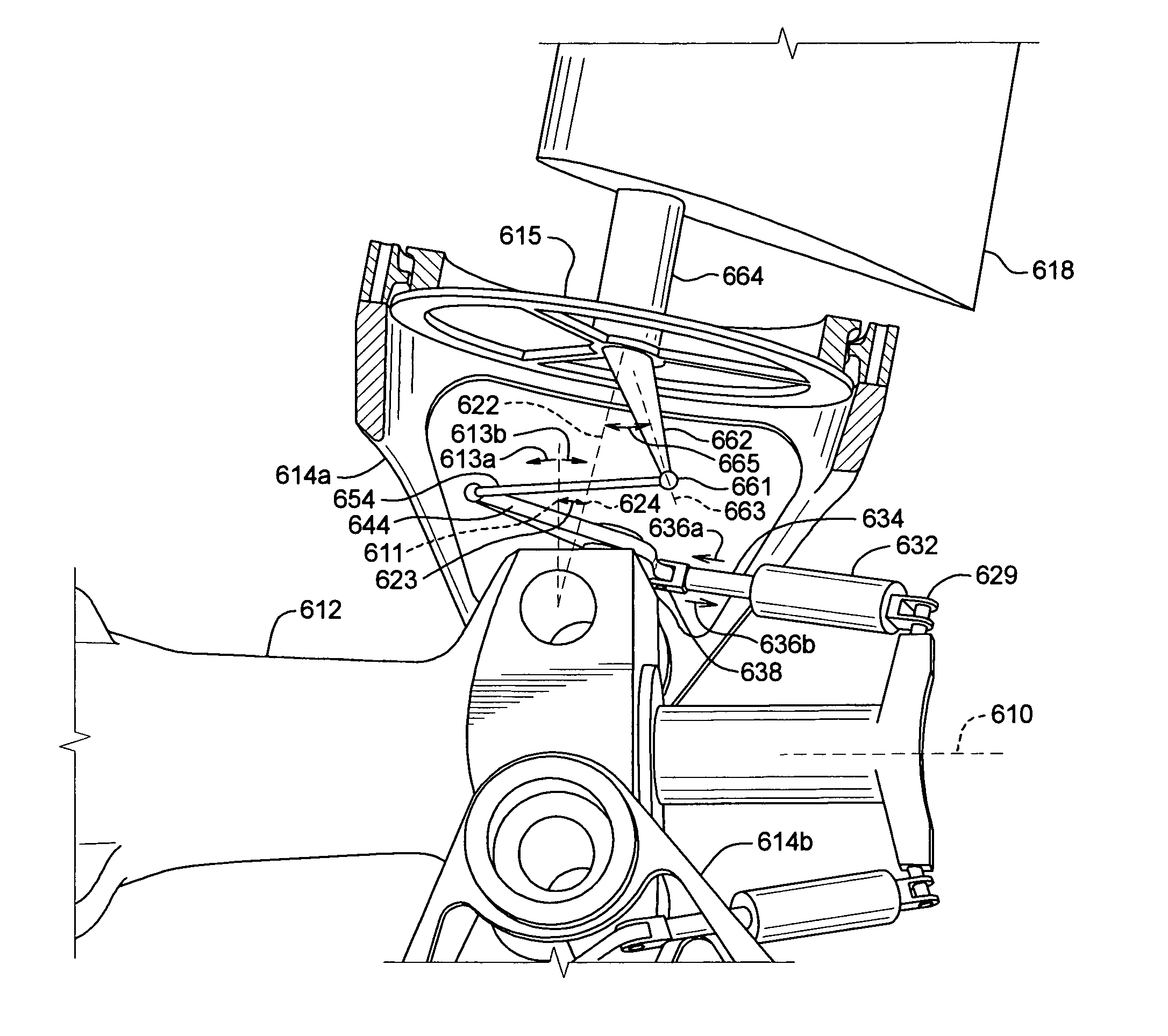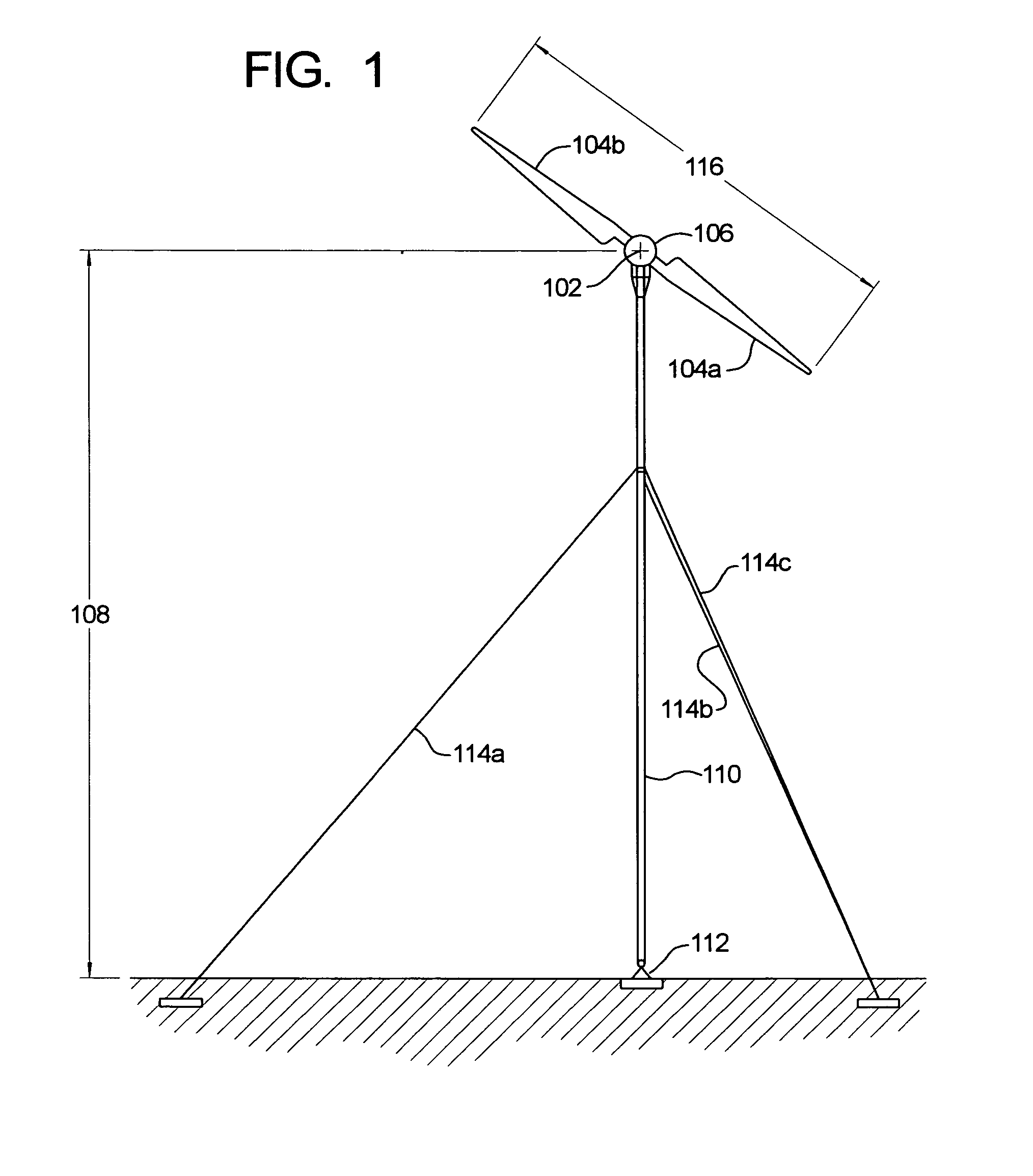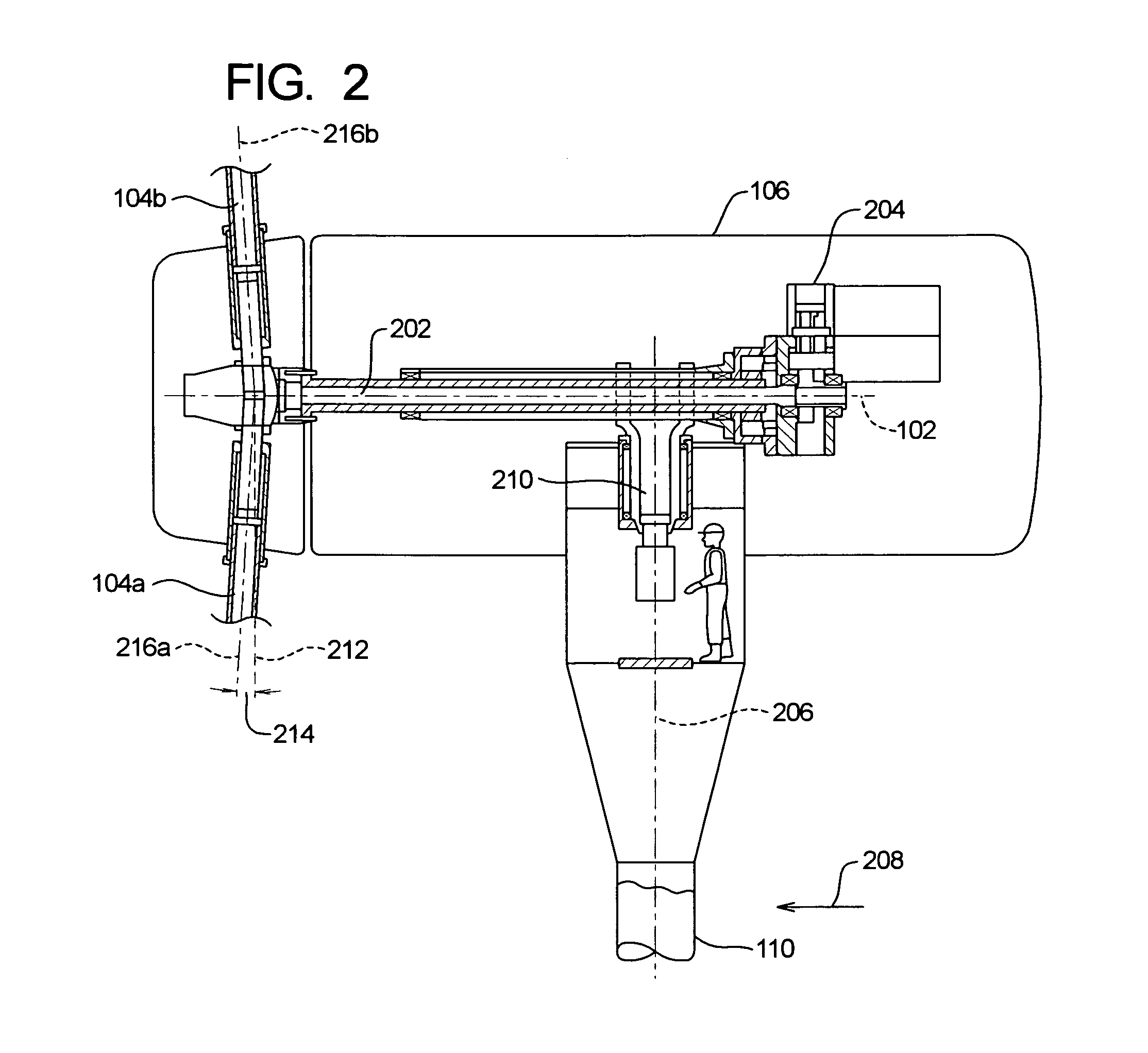Method and apparatus for controlling pitch and flap angles of a wind turbine
a wind turbine and flap angle technology, applied in the field of wind turbines, can solve the problems of large and strong structures, tower strikes or other potentially damaging events, variability in the operation and economics of wind turbines, etc., and achieve the effect of large coupling ratio changes
- Summary
- Abstract
- Description
- Claims
- Application Information
AI Technical Summary
Benefits of technology
Problems solved by technology
Method used
Image
Examples
Embodiment Construction
[0028]The present invention can be applied to many configurations of wind turbines, including a variety of sizes and power ratings. FIG. 1 shows one example of a wind turbine that can be used in connection with the present invention. As depicted in FIG. 1, power is generated by rotation of airfoil-shaped blades 104a, 104b about a rotation axis 102, e.g., by transmission of the rotational motion to an electric generator. A number of blade materials can be used, including glass fiber composites. In the depicted embodiment, the generator 106 and blades 104a, 104b are positioned a distance 108 above the surface of the ground by a tower 110 mounted on a base 112 and positioned, e.g., using guy wires 114a, 114b, 114c. In one embodiment, the rotating blades 104a, 104b define a circle having a diameter 116 of about 54 meters. In one embodiment, the height 108 of the tower is about 100 meters.
[0029]As depicted in FIG. 2, rotation of the blades 104a, 104b about the rotational axis 102 is tran...
PUM
 Login to View More
Login to View More Abstract
Description
Claims
Application Information
 Login to View More
Login to View More - R&D
- Intellectual Property
- Life Sciences
- Materials
- Tech Scout
- Unparalleled Data Quality
- Higher Quality Content
- 60% Fewer Hallucinations
Browse by: Latest US Patents, China's latest patents, Technical Efficacy Thesaurus, Application Domain, Technology Topic, Popular Technical Reports.
© 2025 PatSnap. All rights reserved.Legal|Privacy policy|Modern Slavery Act Transparency Statement|Sitemap|About US| Contact US: help@patsnap.com



